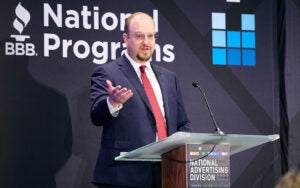 “Data Driven Thinking” is written by members of the media community and contains fresh ideas on the digital revolution in media.
“Data Driven Thinking” is written by members of the media community and contains fresh ideas on the digital revolution in media.
Today’s column is written by Jesse Pujji, CEO at Ampush.
Facebook’s announcement of a real time advertising exchange in June last year was one of the biggest stories of 2012. Even though data is still scarce on the platform, early reports have shown positive results for performance advertisers, with average CPA improvements of 40% and some advertisers seeing returns as high as 700%. Facebook Exchange is built to scale so if it really takes off, the sky will be the limit.
Advertisers have steadily adopted FBX. While it’s tough to gauge exactly how many advertisers are using FBX, according to Facebook sources, the estimate is around 1,300.
It’s clear we’re in the very early days of FBX. Currently, there are only 12 official FBX partners, and only three of these are pure retargeting companies. This number should increase this year as Facebook continues opening up and expanding FBX to more partners. Any DSP or retargeting company who wants access to the FBX platform will need to go through companies like AdRoll, Triggit, ReTargeter, or Chango.
FBX has been a hit with retargeting companies. Last year Triggit boasted ROI on FBX retargeted campaigns was two to four times higher than other platforms. The appeal of chasing website visitors, especially for companies with high-impression sites, is undeniable and cuts across all market sectors.
It remains to be seen whether having a non-IAB standard ad format will be a hurdle for bringing new advertisers onto the platform. New advertisers can’t just push a button to repurpose existing campaigns. With each campaign needing to be modified specifically to support FBX, integration will not equal instant demand. This might not register as an issue for some advertisers, but the larger ones may have reservations.
Facebook is definitely still the junior player. Google’s DoubleClick Ad Exchange is a decade ahead in this area and, while we’re still in the early days of FBX, adoption is much lower. However FBX could potentially close the gap quickly, and is poised to outpace it in terms of the early rate of adoption. The key differentiator is that Google doesn’t have anywhere near the social media platform Facebook does. Google’s recent acquisition of social marketing software company Wildfire shows that this deficit is very much on its mind.
It is hard to say how FBX will affect the total ad display ecosystem for real time advertising. However, if advertisers continue to adopt the platform as they’ve been, it will be huge. According to comScore, Facebook is already responsible for some 30% of advertising expressions in America. Given the company’s success thus far with its Ads products, it is hard to deny the almost certainty of FBX to become a game changer.
Follow Jesse Pujji (@jspujji) and AdExchanger (@adexchanger) on Twitter.












